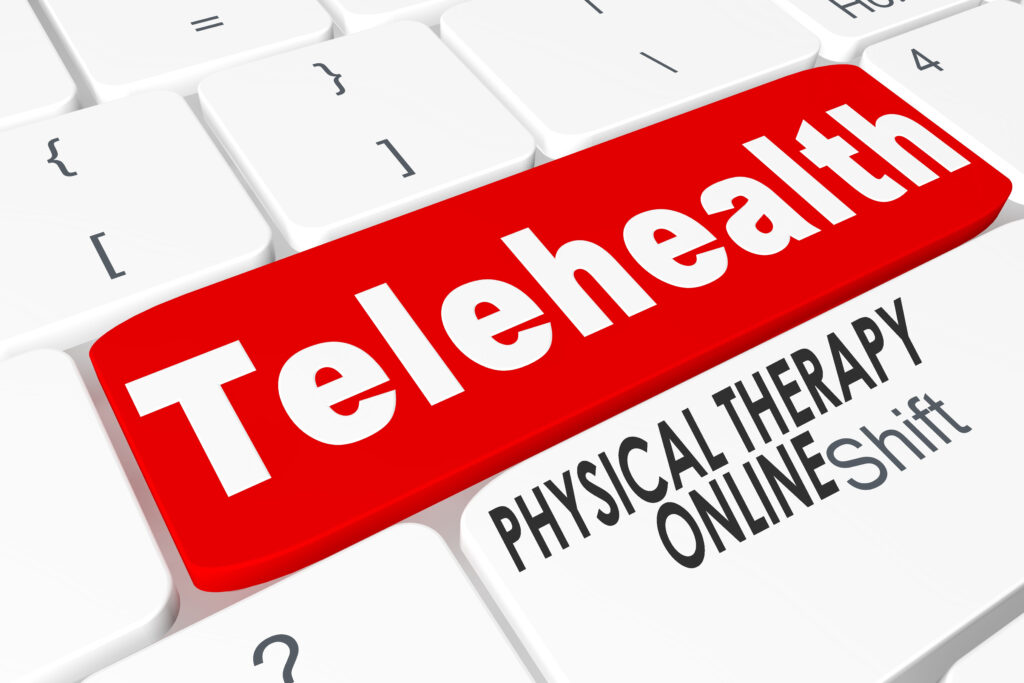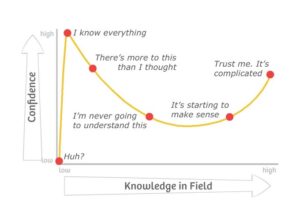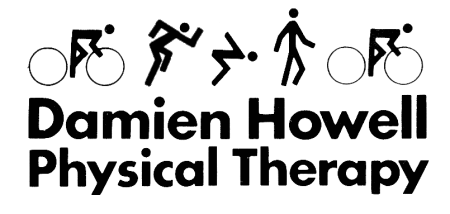Physical Therapy telehealth lessons learned mistakes made

My perception of my abilities in providing telehealth video conferencing Physical Therapy or Physical Therapy service online follows the Dunning-Kruger effect.

The Dunning-Krueger effect is a process of overestimating and underestimating our abilities and competence.
When I began offering telehealth Physical Therapy in 2017, I initially overestimated my abilities. Over the past seven years, I have progressed through the four stages of the Dunning-Kruger effect.
- Unconscious incompetence – didn’t know what I didn't know.
- Conscious incompetence – became aware of what I didn't know.
- Conscious competence – gained more competence.
- Unconscious competence – haven’t quite mastered it yet.
Unconscious incompetence – didn’t know what I didn't know.
When I started providing Physical Therapy services online, my confidence was high. I believe 80% of the diagnosis is a result of listening to what the patient tells me. I had decades of listening to patients. In my area of expertise, I felt confident in providing not only effective assistance but efficient service as well.
Then the COVID pandemic hit, and I thought, great, I’m already set up to provide Physical Therapy online. I was ready.
Conscious incompetence – became aware of what I didn’t know.
Eventually, I realized that:
- My confidence was higher when I could physically guide patients, a luxury that telehealth does not allow.
- I also struggled with verbally directing movements, a skill I needed to refine.
- My skills in telehealth did not work for everyone.
- There are frustrating ambiguities regarding statutory limitations on providing telehealth services. For example, one of my patients sent me an email request for assistance while she was on a cruise in the Caribbean Ocean. I reached out to the Physical Therapy Virginia license board for guidance. The guidance was that statutes and regulations did not address this issue.
Conscious competence – gained more competence
I gradually accepted that in-person Physical Therapy is generally superior, but I also recognized that telehealth Physical Therapy has distinct advantages in certain situations.
When the available times are limited because of commitments of the patient, telehealth can be a good alternative for in-person visits. For example, work hours and time commitments to take care of aging parents or children make it difficult to find time for travel and waiting for in-person medical appointments.
When the costs for the patient are prohibitive due to a lack of health insurance coverage or high deductibles on health insurance plans, the cost for the patient for a telehealth visit should be less when self-paying compared to in-person visits. A limited number of studies show that the costs for telehealth visits are lower than in-person visits.
When obtaining optimal medical services is difficult because of geographic distance barriers, telehealth can be a good alternative or supplement for in-person visits. I have been able to provide second opinions regarding Physical Therapy to patients living more than 2 hours car drive from Richmond Va, and patients living in Georgia, US. Telehealth services benefit individuals with chronic pain by reducing the need for painful travel to in-person visits.
Another benefit is that a telehealth visit may allow the healthcare provider to see the real environment the patient is dealing with. This facilitates intervention involving movement pattern training.
Unconscious competence – haven’t quite mastered it yet.
With more time and practice, I learned how to become more effective with the telehealth mode of Physical Therapy service.
My standard practice during in-person Physical Therapy visits is to provide the patient with real-time visual feedback on how they are moving using 2D slow-motion video.
A prevailing belief is that Physical Therapy is known to provide hands-on interventions. Telehealth Physical Therapy does not involve hands-on interventions.
Physical Therapists are movement specialists.
Physical therapists examine and evaluate the movement system, including diagnosis and prognosis, to provide a customized and integrated plan of care to achieve the individual’s goal-directed outcomes. Physical therapists maximize an individual’s ability to engage with and respond to his or her environment using movement-related interventions to optimize functional capacity and performance.
If there is pain with movement, then observation of movement is important. Observing that painful movement occurs during a telehealth visit.
Recording of telehealth video conference and screenshots sharing of visual data with patients can occur during subsequent sessions.
As my understanding of telehealth evolved, I also explored different ways of delivering remote care, including synchronous and asynchronous methods. Synchronous telehealth is a real-time interaction between the patient and a healthcare provider. Whereas asynchronous telehealth, also known as “store-and-forward,” is communication between parties that is not live. The tactic of using video recordings is well-suited for asynchronous telehealth.
Here is an example of assisting a patient to move in a more optimal way during a telehealth session to manage rib pain that was accomplished during the COVID pandemic.
Having the patient capture a real-world selfie video while moving during a painful activity has proven valuable and is amenable to use during synchronous or asynchronous telehealth visits.
I learned that some of the shortcomings of telehealth visits can be overcome by providing a hybrid of combining follow-up with in-person visits with telehealth visits.
I hope to continue progressing through the uncertainties and ambiguities of the competencies of providing Physical Therapy services using intellectual humility.

"Real knowledge is to know the extent of one's ignorance” – Confucius
